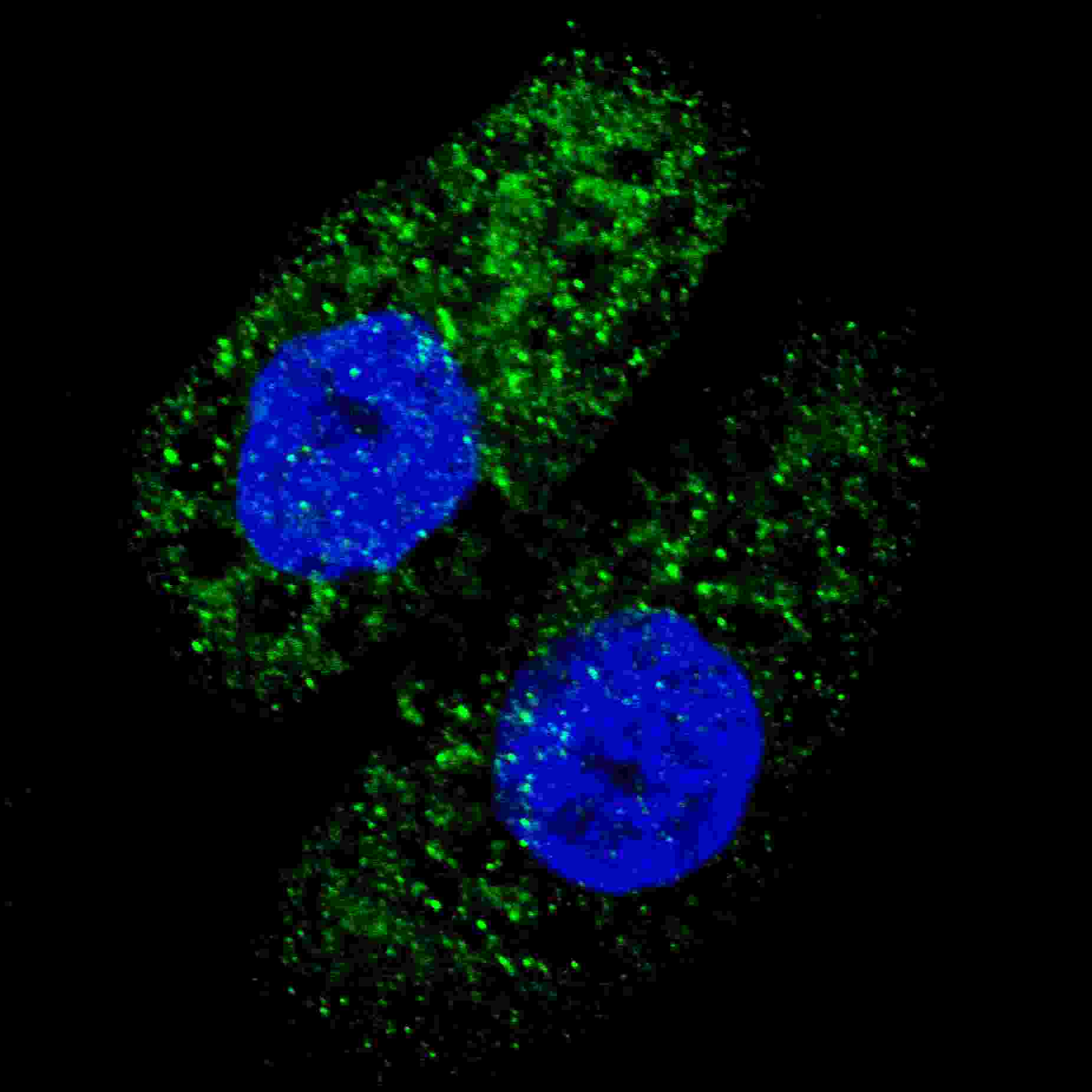
Fluorescent image of U251 cells stained with ATG5 antibody. U251 cells were treated with Chloroquine (50 ?M,16h), then fixed with 4% PFA (20 min), permeabilized with Triton X-100 (0.2%, 30 min). Cells were then incubated with AP1812c ATG5 primary antibody (1:200, 2 h at room temperature). For secondary antibody, Alexa Fluor� 488 conjugated donkey anti-rabbit antibody (green) was used (1:1000, 1h). Nuclei were counterstained with Hoechst 33342 (blue) (10 ?g/ml, 5 min). ATG5 immunoreactivity is localized to autophagic vacuoles in the cytoplasm of U251 cells.